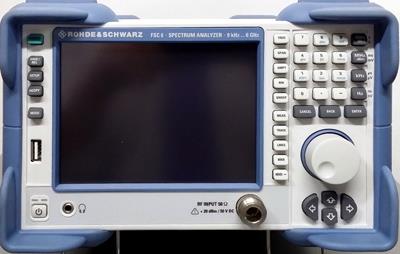
|
|
The R&S FSC3.03 (1314.3006.03) 3 GHz Spectrum Analyzer is a compact, cost-efficient solution that offers all essential features of a professional spectrum analyzer with Rohde & Schwarz quality. It covers a wide range of applications from simple development tasks to production, or can be used for training RF professionals. Moreover, it is ideal for applications in service or maintenance. An optional preamplifier that is available for all models increases sensitivity for measuring weak signals. It features; Noise marker for determining the noise power referenced to 1 Hz measurement bandwidth. Frequency counter with 0.1 Hz resolution. Limit line monitoring (pass/fail function) for indicating whether the DUT complies with defined limits. Modulation depth measurement of AM-modulated signals. Measurement of harmonics and total harmonic distortion. AM/FM audio demodulator (audio via built-in loudspeaker or via headphones). Location of EMC problems on printed boards using the R&S®HZ-15 near-field probe set for emission measurements from 30 MHz to 3 GHz. Channel power measurement in a definable transmission channel with predefined settings for 3GPP WCDMA, cdmaOne, CDMA2000® and LTE mobile communications standards. All functions of the R&S FSC can be controlled via the USB or LAN interface using SCPI-compatible remote-control commands. Specifications. Frequency range: 9 kHz to 3 GHz. Resolution bandwidth: 10 Hz to 3 MHz. Displayed average noise level without preamplifier, RBW = 1 Hz: < –141 dBm, typ. –146 dBm (10 MHz to 2 GHz), < –138 dBm, typ. –143 dBm (2 GHz to 3 GHz). IP3 frequency 1 GHz: typ. 15 dBm. Phase noise frequency 500 MHz: < –95 dBc (1 Hz) (30 kHz carrier offset), < –100 dBc (1 Hz) (100 kHz carrier offset), < –120 dBc (1 Hz) (1 MHz carrier offset). Detectors: sample, max/min peak, auto peak, RMS. Level measurement uncertainty: < 1 dB, typ. 0.5 dB (10 MHz < f <= 3.0 GHz). Display: 5.7" (14.5 cm) color LCD with VGA resolution. Option. 1314.3535.02 - Preamplifier, 100 kHz to 3 GHz.
|